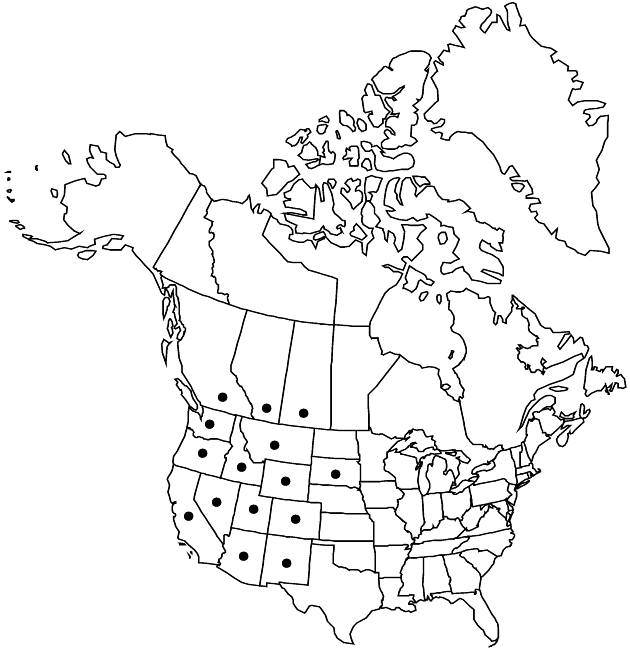Difference between revisions of "Crepis occidentalis"
J. Acad. Nat. Sci. Philadelphia 7: 29. 1834.
FNA>Volume Importer |
RevisionBot (talk | contribs) m (Bot: Adding category Revised Since Print) |
||
| (7 intermediate revisions by 3 users not shown) | |||
| Line 8: | Line 8: | ||
}} | }} | ||
|common_names=Gray or western hawksbeard | |common_names=Gray or western hawksbeard | ||
| + | |special_status={{Treatment/ID/Special_status | ||
| + | |code=F | ||
| + | |label=Illustrated | ||
| + | }}{{Treatment/ID/Special_status | ||
| + | |code=E | ||
| + | |label=Endemic | ||
| + | }} | ||
|basionyms= | |basionyms= | ||
|synonyms={{Treatment/ID/Synonym | |synonyms={{Treatment/ID/Synonym | ||
|name=Psilochenia occidentalis | |name=Psilochenia occidentalis | ||
|authority=(Nuttall) Nuttall | |authority=(Nuttall) Nuttall | ||
| + | |rank=species | ||
}} | }} | ||
|hierarchy=Asteraceae;Asteraceae tribe Cichorieae;Crepis;Crepis occidentalis | |hierarchy=Asteraceae;Asteraceae tribe Cichorieae;Crepis;Crepis occidentalis | ||
| Line 23: | Line 31: | ||
-->{{Treatment/Body | -->{{Treatment/Body | ||
| − | |distribution= | + | |distribution=Alta.;B.C.;Sask.;Ariz.;Calif.;Colo.;Idaho;Mont.;N.Mex.;Nev.;Oreg.;S.Dak.;Utah;Wash.;Wyo. |
|discussion=<p>Subspecies 4 (4 in the flora).</p><!-- | |discussion=<p>Subspecies 4 (4 in the flora).</p><!-- | ||
--><p><i>Crepis occidentalis</i> is recognized by the old, brown leaf bases persisting on caudices, by stems, leaves, and phyllaries gray-tomentose, and by loose, corymbiform arrays with relatively few, relatively large heads. It is widespread and polymorphic. Some specimens have coarse setae or black, stipitate glands on the phyllaries in addition to the tomentose indument, the stipitate glands sometimes extending proximally on stems. Four intergrading subspecies were recognized by E. B. Babcock (1947). The sexual diploid forms are found in <i></i>subsp.<i> occidentalis</i> and occur in northern California and adjacent <i>Nevada</i>. The other subspecies are polyploid and apomictic (Babcock).</p> | --><p><i>Crepis occidentalis</i> is recognized by the old, brown leaf bases persisting on caudices, by stems, leaves, and phyllaries gray-tomentose, and by loose, corymbiform arrays with relatively few, relatively large heads. It is widespread and polymorphic. Some specimens have coarse setae or black, stipitate glands on the phyllaries in addition to the tomentose indument, the stipitate glands sometimes extending proximally on stems. Four intergrading subspecies were recognized by E. B. Babcock (1947). The sexual diploid forms are found in <i></i>subsp.<i> occidentalis</i> and occur in northern California and adjacent <i>Nevada</i>. The other subspecies are polyploid and apomictic (Babcock).</p> | ||
| Line 64: | Line 72: | ||
-->{{#Taxon: | -->{{#Taxon: | ||
name=Crepis occidentalis | name=Crepis occidentalis | ||
| − | |||
|authority=Nuttall | |authority=Nuttall | ||
|rank=species | |rank=species | ||
| Line 71: | Line 78: | ||
|basionyms= | |basionyms= | ||
|family=Asteraceae | |family=Asteraceae | ||
| − | |distribution= | + | |distribution=Alta.;B.C.;Sask.;Ariz.;Calif.;Colo.;Idaho;Mont.;N.Mex.;Nev.;Oreg.;S.Dak.;Utah;Wash.;Wyo. |
|reference=None | |reference=None | ||
|publication title=J. Acad. Nat. Sci. Philadelphia | |publication title=J. Acad. Nat. Sci. Philadelphia | ||
|publication year=1834 | |publication year=1834 | ||
| − | |special status= | + | |special status=Illustrated;Endemic |
| − | |source xml=https:// | + | |source xml=https://bitbucket.org/aafc-mbb/fna-data-curation/src/2e0870ddd59836b60bcf96646a41e87ea5a5943a/coarse_grained_fna_xml/V19-20-21/V19_296.xml |
|tribe=Asteraceae tribe Cichorieae | |tribe=Asteraceae tribe Cichorieae | ||
|genus=Crepis | |genus=Crepis | ||
| Line 82: | Line 89: | ||
}}<!-- | }}<!-- | ||
| − | -->[[Category:Treatment]][[Category:Crepis]] | + | --> |
| + | |||
| + | [[Category:Treatment]] | ||
| + | [[Category:Crepis]] | ||
| + | [[Category:Revised Since Print]] | ||
Latest revision as of 18:27, 6 November 2020
Perennials, 8–40 cm; taproots deep, caudices swollen, (often covered with old leaf bases). Stems 1–3, erect, stout, branched from bases or beyond, hispid, tomentose, or tomentulose, sometimes stipitate-glandular distally. Leaves basal and cauline; petiolate; blades elliptic, runcinate, (5–)8–20 × 2–5 cm, margins pinnately-lobed to sinuously dentate (lobes broadly lanceolate, often dentate), apices acute or acuminate, faces gray-tomentose, sometimes stipitate-glandular. Heads 2–30, in loose corymbiform arrays. Calyculi of 6–8, lanceolate or linear, glabrate to tomentose bractlets 2–6 mm. Involucres cylindric, 11–19 × 5–10 mm. Phyllaries 7–13, lanceolate, 12–15 mm, (bases thickened, keeled, margins green, often scarious) apices acute or acuminate, abaxial faces gray-tomentose, sometimes setose (setae black or greenish) or stipitate-glandular, adaxial glabrous or with fine hairs. Florets 10–40; corollas yellow, 18–22 mm. Cypselae golden or dark brown, subcylindric, 6–10 mm, apices tapered (not beaked), ribs 10–18, strong and rounded; pappi yellowish white, 10–12 mm (bristles unequal). 2n = 22, 33, 44, 55, 66, 77, 88.
Distribution

Alta., B.C., Sask., Ariz., Calif., Colo., Idaho, Mont., N.Mex., Nev., Oreg., S.Dak., Utah, Wash., Wyo.
Discussion
Subspecies 4 (4 in the flora).
Crepis occidentalis is recognized by the old, brown leaf bases persisting on caudices, by stems, leaves, and phyllaries gray-tomentose, and by loose, corymbiform arrays with relatively few, relatively large heads. It is widespread and polymorphic. Some specimens have coarse setae or black, stipitate glands on the phyllaries in addition to the tomentose indument, the stipitate glands sometimes extending proximally on stems. Four intergrading subspecies were recognized by E. B. Babcock (1947). The sexual diploid forms are found in subsp. occidentalis and occur in northern California and adjacent Nevada. The other subspecies are polyploid and apomictic (Babcock).
Selected References
None.
Lower Taxa
Key
| 1 | Phyllaries sparsely to densely stipitate-glandular | > 2 |
| 1 | Phyllaries 8–12, usually eglandular, if glandular, phyllaries 8 | > 3 |
| 2 | Phyllaries (peduncles and distal cauline leaves) stipitate-glandular (lacking large dark or black glandular setae); phyllaries 7–8 or 10–13; florets 18–30 | Crepis occidentalis subsp. occidentalis |
| 2 | Phyllaries (peduncles and distal cauline leaves) stipitate-glandular (and with dark or black, glandular setae); phyllaries 8, florets 10–14 | Crepis occidentalis subsp. costata |
| 3 | Plants 10–40 cm (stems with definite primary axes, branched distally; phyllaries mostly 8; leaves coarsely dentate or pinnately lobed (lobes closely spaced) | Crepis occidentalis subsp. pumila |
| 3 | Plants 5–20 cm (stems branched proximally; phyllaries 8–12; leaves deeply pinnately lobed (lobes remotely spaced, lanceolate, or linear, entire or dentate) | Crepis occidentalis subsp. conjuncta |